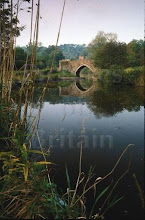I mentioned in a recent post that I had seen the first of this year’s visitors at the top of the lane, and made reference to the old adage ‘one swallow does not a summer make.’ Today there were at least thirty of them, and still the prospect of summer seemed hidden beyond the far horizon. There they were, gracing the sky with their aerobatics as usual, sometimes coming within touching distance of me, while the rain fell and the air remained disappointingly cold for late spring. It reminded me of that dreadful wet summer in 2012 when I was constantly concerned for the welfare of these marvellous birds, as well as their cousins, the house martins and swifts, which had flown thousands of miles to get here, only to find gloom, wetness and airborne food in short supply.
The day did not continue in similar vein; it got worse. The gloom grew gloomier and the rain fell heavier throughout the afternoon and evening, and eventually I felt obliged to go out into the downpour to clear the road grids again. And part of the reason for saying all this is to consider the possible effects of climate change.
I gather there’s a popular misconception among foreign visitors to Britain; they seem quite convinced that it’s always raining here. It isn’t; the truth of the matter is that the weather in Britain and Ireland is notoriously capricious. I remember being told as a boy that you should never go far from home without a raincoat or umbrella, even if the day seems set to be fair and dry. And there’s an old saying along the lines of ‘Ne’er shed clout (clothes) ’till May is out.’ In other words, don’t be persuaded to break open the summer wardrobe until summer is with us in earnest because British weather is unreliable.
But in the last few years I’ve noticed a change. We used to be aware that the weather could change dramatically over the course of a day or two, or even from hour to hour, but now we seem to be more prone to long periods of one thing or another. The whole of last winter was depressingly wet. April, in contrast, was so consistently dry and cold that the land and early crops were suffering badly. May comes along and we’ve had rain, hail and sleet – and unseasonably low temperatures – nearly every day. We’ve also had at least six thunderstorms, which I swear we never used to get in May. Thunderstorms were associated with hot, humid spells in high and late summer. And I’m sure I’m not wrong when I say that we get far more easterly and northerly winds than we used to have. I’d be interested to have a meteorologist’s opinion on this.
Maybe this is why the Shire skies have been devoid of swifts for several years now, and house martin numbers are drastically lower than they used to be. Thankfully, the swallows are still braving the change – and long may they continue to bring joy and thrills to fair summer skies as and when we get them – but for how much longer? And I do realise that other parts of the world are suffering more extensive and dangerous changes, but I can only speak of my own observations in my own little piece of the planet.
So is this a preamble to the shape of things to come, and, if so, how should we view it? A core characteristic of the future is its perennial unpredictability, so maybe we should conclude that all is for the best in the most unfathomable of all possible worlds. If swallows are capable of considering a temporal concept like the future, it’s probably the view they would take.
* The reason I use the term ‘truly wild’ in relation to the swallow is this: I’ve said often enough that the robin is my favourite bird, and it still is. But the robin is a woodlands species and therefore, in common with other woodland species, the sort most given to utilising the conditions provided in a domestic garden. As such I tend to regard it, irrationally I suppose, as semi-domesticated.







No comments:
Post a Comment